Speaker
Description
The future of Gravitational Waves (GWs) is bright. LIGO and Virgo have detected more than 70 signals from black hole and/or neutron star mergers. All measured signals came in the LIGO/Virgo sensitive band at around 30 Hz. Suspension control noise, fueled by many cross couplings between angular and translational degrees of freedom, sets this limit by being the dominant noise source below 30 Hz.
Einstein Telescope (ET) will be an underground and cryogenic detector sensitive to GWs down to 2 Hz. We believe the cryogenic environment can be used in combination with superconducting materials to open up pathways to low-loss actuators and sensor mechanics. The Cryogenic Superconducting Inertial Sensor (CSIS) revolutionizes the (cryogenic) inertial sensor field by obtaining a displacement sensitivity at 0.5 Hz of several fm/$\surd{\mathrm{Hz}}$. This is 3 orders of magnitude better than the state-of-the-art.
Such highly sensitive device can monitor the effects of low-vibration cryocoolers applied to the penultimate stage of ET as well as aid in control. Not only will it help ET detect GWs from 2 Hz onwards, CSIS will also be deployed on the Moon. The recently published Lunar GW Antenna (LGWA) concept uses an inertial sensor array to probe the surface motion as a result of GW excitation of the lunar body. In summary, CSIS will be the world's most sensitive cryogenic low-frequency inertial sensor and, when deployed in ET and on the Moon, will enable GW science from 1 mHz to 5 Hz.
| Primary experiment | Einstein Telescope gravitational wave detector |
|---|
